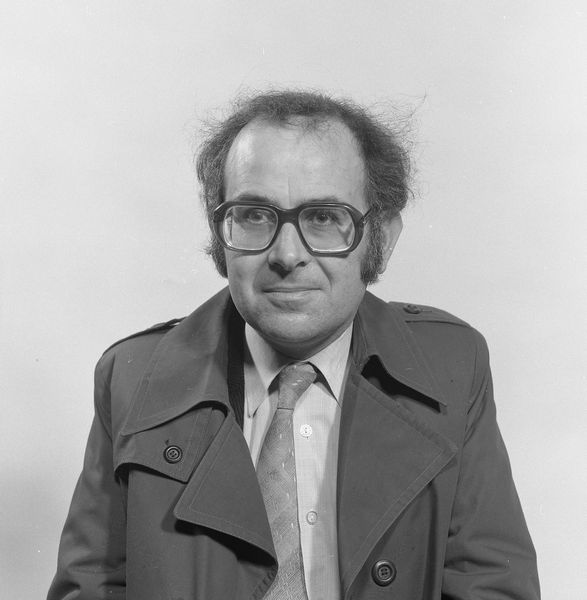

We would have liked to bring you some interesting stories to read during the Summer holidays but the Forty Report on Advanced Research Computing and the Bush Report on the Needs of Engineering Computing have not yet been published. We hope to have some details in the next issue.
Use of the MVS system on the central mainframes is creeping up while the number of queries from users is reducing. There is still some confusion about the rationing and control systems and the recent well attended course run by John Gordon should have done something to alleviate this. The New Users course on the other hand was very poorly attended and we would welcome your views on better ways of introducing new users to the system. We would also like invitations to come and give the course at your site.
Talking of things being badly attended reminds me of the last GEC User Meeting when only a handful of users were present. As a result this group has been reorganised and the first GEC Joint Users and Managers Meeting will take place at RAL on 5/6 September. Put the dates in your diary now!
Since the split of the Computing Division last July, Informatics Division has been running with an interim internal organisation while the needs of the Alvey Directors in the areas of Man Machine Interface (MMI), Intelligent Knowledge Based Systems (IKBS) and Software Engineering (SE) were established. From 1 June 1985 the Division will have the following Group Structure with a Grade 6 (SPSO) Post in charge of each Group.


This year, the Division is increasing its activities in the MMI field so that the Group splits its time into approximately half to each area. Any good MMI system has to show some signs of intelligence and any good IKBS system needs an interface to the user. Consequently, there is a close interaction between the two activities.
The Group provides technical coordination for the two relevant Alvey Directors. This includes organisation of workshops, mounting applications software, establishing the necessary hardware and software infrastructure requirements and a small amount of research.
The Software Engineering Group continues largely unchanged in terms of structure and duties. It provides a programme management function for the Alvey SE Director and technical support which extends from mailshots to specific software developments required by the programme. The Group has an active research programme with quality certification of software products as its theme.
The Distributed Interactive Computing Group is basically a systems group compared with the other two groups which are primarily concerned with applications. Two major functions are the Interactive Computing Facility and the Single User System Common Base Programme. The third function is supporting the Alvey infrastructure of GEC Series 63 systems, Systime VAX 11/750s, a UTS service on the ATLAS-10, and single user systems.
In each area, the Group provides resource management, operational, systems and user support.
The changes have occurred mainly at the management level with most of the staff continuing to perform the same job as in the past.
The Division will begin to move from the Atlas Centre to the main Rutherford building, R1, this summer. The Distributed Interactive Computing Group will be the first to move, probably in July.
The first meeting of the SUN computer users group was held at the Rutherford Appleton Laboratory on Friday 17 May. More than 30 people attended the meeting. Apart from a number of people from RAL there were representatives from nine Universities and two industrial laboratories.
So far over 50 SUN computers have been ordered for Alvey related projects with a total value of approximately £1.8M.
The main talk was given by Cliff Pavelin, head of the IKBS/MMI group of Informatics Division. He outlined plans for central purchase of machines, for a loan pool of SUN equipment, a central hardware maintenance agreement, central software support with RAL providing the first line of support and the provision of applications software.
After lunch representatives from SUN described their latest products: the Graphics Processor and Buffer to enhance the performance of the SUN2/160, the Shoebox to provide 71M Byte or 142M Byte disk drives for the SUN2/50 and the Laser Writer and Interface Kit.
The meeting finished with a user forum when users discussed their problems and in some cases exchanged solutions. C. Brown of Sheffield University described the UK SUN User Group he was setting up and asked that the SERC SUN User Group should liaise closely with it. Since the meeting Jane Hesketh of Edinburgh University has agreed to chair future meetings of the SERC SUN User Group. She is also now a member of the committee of the UK SUN User Group.
The meeting of the VAX User Group held on 13 June was attended by 17 users. A major topic was how best as a group to exert pressure to obtain solutions to problems. In the case of network software it was decided to compile one list of problems for the combined meeting to be held on 4 July. This meeting will include representatives of DEC, UWIST, Computer Board VAX meetings and the VAX User Group.
The afternoon was taken up by a presentation of the Name Registration Scheme by Dr R D Baker of Salford University. Under NRS all sites are registered in a data-base at Salford. The intention is that the name used to access a site should not change even if the network address changes. Users would use the name rather than try to remember network addresses.
The scheme has involved defining a standard format for names and this means most site names will need to change to conform to the standard format.
For the majority of those present this was the first presentation of NRS they had attended. The main concern expressed was about the mechanism for finding out the registered name for a specific site. However the users welcomed the presentation and the opportunity it gave them to raise questions.
A substantial number of graphics users make no significant use of basic graphics packages - such as GKS, SMOG and GINO-F - but rely on high level routines, such as those that plot graphs or contours. Now that we are installing GKS on the majority of RAL-supported systems, users have been asking for information about the high level routines that will be available with GKS.
Currently a large number of routines are available above a basic graphics package: SMOG for IBM systems, GINO-F for ICF systems and GKS 6.2 for Starlink systems. While the implementation on the ICF and Starlink systems was reliable, errors and deficiencies crept in when the current IBM versions were produced and have long been a source of frustration to users.
It was obvious that Graphics Section had reached overload point with the support of the existing graphics systems; it was a full-time job reacting to new computers, operating systems, networks and devices. As a result, the range of graphics facilities was not expanding in the way we wanted.
Concentration on a single basic system - GKS 7.2 -across all supported machines was agreed as an essential part of our strategy. With GKS in place, support of the high level routines is also simplified since one version, rather than three, has to be maintained. GKS provides functions for filled areas, image display, multiple fonts and extensive control of text output, supplying the facilities in chapters D8 and D9 of the RL Graphics User's Guide.
New versions of the DRPLOT, CONTOUR and HIST3D packages (chapter D2, D4 and D5 of the RL Graphics User's Guide) have been prepared to work with GKS 7.2. The CURVEFIT package (chapter D3) is in the process of being converted. All routines in these packages have the same calling sequences and effects as their predecessors that called SMOG or GINO-F. Many errors that were in the IBM versions have been eliminated.
These packages are being made available so that existing programs can be converted to use GKS with minimum effort. However it is now possible to improve the range of facilities and the quality of support by using the NAG Graphics Supplement. Mark 2 of the Supplement is written in Fortran 77, like RAL GKS. and an interface to GKS is provided.
A number of new facilities are provided in Mark 2 in addition to the graph drawing, contour maps and surface plots that were available in Mark 1. These include three-dimensional histograms, piecharts, barcharts, log axes and routines for drawing special functions. Enhancements have also been made to the facilities in Mark 1.
Graphics Section will support the NAG Graphics Supplement, passing any unsolved problems or user requests back to NAG Limited. The majority of the computers supported by Graphics Section already have the Supplement. Those that do not may now decide that the range of facilities available in Mark 2 makes it an attractive proposition.
In summary, we are offering two facilities. The original high level routines are being made available above GKS 7.2. In addition, the NAG Graphical Supplement is being provided to increase the range of facilities without increasing the support burden proportionally.
A revised Part D of the RL Graphics User's Guide has been prepared and will be circulated to all registered holders of that manual. The NAG Graphical Supplement is described in its own manual, produced by NAG Limited: details of how to order a copy may be obtained from the Documentation Officer at RAL. The RAL GKS Guide (which contains the User Guide and Reference Manual) is now available: contact the Documentation Officer for details.